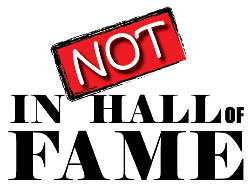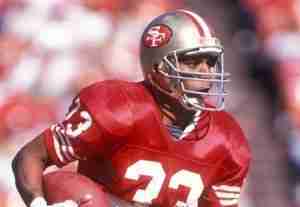317. Ron McDole
Ron McDole’s professional football career got off to a slow start as the former Nebraska Cornhusker did not accomplish much in 1961 as a rookie with the St. Louis Cardinals. 1962 was worse, as he migrated to the Houston Oilers of the American Football League and played even less.
332. Glenn Presnell
Out of the University of Nebraska, Glenn Presnell first played for the semi-pro Ironton Yanks in 1929. The Yanks were not part of the NFL but would have games against NFL teams where they would sometimes emerge as the victor. Presnell would sing with the NFL's Portsmouth Spartans, where he would be a bona fide triple threat in terms of passing, running and kicking and would be an All-Pro in 1933. Presnell would then join the Detroit Lions and was a key member of their 1935 Championship Team.
179. Charley Brock
128. Pat Fischer
Pat Fischer was not a tall man, standing at only 5' 9", which was likely why the multi-talented star at Nebraska fell to the 17th Round. It was the St. Louis Cardinals who chose him, and after initially using him as a Returner, he would force his way to become a starting Cornerback and would be named to the Pro Bowl in 1964 and 1965. The certified ballhawk would later sign with the Washington Redskins and brought a veteran presence to their secondary and was a large part of their appearance in their Super Bowl VII appearance. Fischer would play until 1977 and would accumulate 56 Interceptions.
36. Verne Lewellen
One of the early stars of the Green Bay Packers, Verne Lewellen, was an all-purpose Back who did it all for Green Bay. The product of Nebraska (the state and the University) would be named to four straight First Team All-Pro squads (1926 to 1929) and was a large part of their three consecutive NFL Championships (1929 to 1931).
7. Roger Craig
It is difficult to understand why Roger Craig had to wait for ten years to be nominated for the Football Hall of Fame, given his strong credentials. Craig was an essential player in every offensive play during his prime. Although he began his career as a fullback, it soon became apparent that he was equally skilled at carrying the ball and blocking for others. In 1986, he made history by becoming the first football player to both rush and catch for 1,000 yards each. Opposing defences were intimidated by his high-knee running style and had to keep a close eye on him during every play.
Craig played a significant role in three Super Bowl Championship teams. Despite his innovative style, he is often overlooked due to the fact that he played alongside some of the most high-prolific offensive stars in football. Critics have suggested that he was merely a beneficiary of the great performances of his teammates, such as Montana and Rice. Nevertheless, Roger Craig was a valuable weapon for the 49ers' offence, and although there may be some debate around his place in the Hall of Fame, he undoubtedly deserved more consideration than he received, although the 2020 Blue Ribbon Finalist spot is a promising sign.
Should Roger Craig be in the Hall of Fame?
32. Neil Smith
Neil Smith was a multi-faceted Defensive End who was equally adept at stuffing the run as defending against the pass. His true gift may have been sacking the Quarterback as he led the NFL in that category in 1993. Smith was a six-time Pro Bowler and though his skills were slightly diminished in the second half of his career, he was able to aid the Denver Broncos in their two consecutive Super Bowl wins in the late 90’s.









